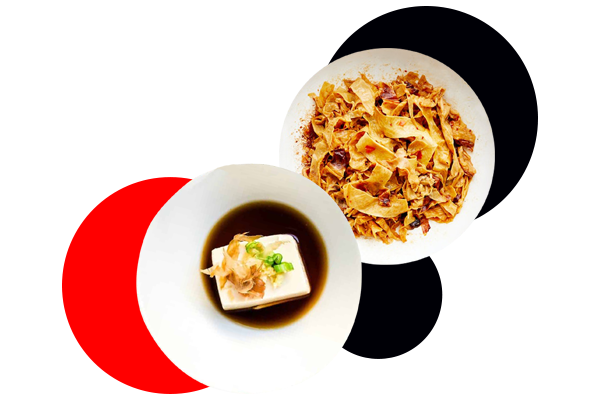Kyoto
Tourist guide

Tourist guide

Te-ji Temple was built in 796 to fulfill the emperor's decree to protect the city. In 823 he passed from the influence of the emperor to the founder of the Buddhist sect Singon Kobo Daisy. The 5-storey pagoda, 55 meters high, has long been an architectural monument of the city and the center of spiritual and relevant life of the community. Every month on the 21st, a large flea market (Kobo-san market) is held on the territory of the Te-ji Temple, attracting sellers from all over Japan.
Kiyomizu Monastery is probably the most popular temple in Kyoto and an integral part of the consciousness of the Japanese people. This is a good place to admire the event. There are several other buildings on the list, included in the list of "national heritage", as well as waterfalls and architectural monuments associated with popular traditions and customs. For this reason, people come to the temple to drink water from waterfalls, saying that water has healing properties.
On New Year’s Eve, and on the first three days of the New Year (1, 2 and 3 January), Kyotoites visit either their local neighborhood shrine or one of Kyoto’s major shrines to pay for luck, success and health in the New Year. Visitors to Kyoto are more than welcome to join. Just be ready for crowds! For more on Hatsumode see our New Year’s in Kyoto page.
This is one of our favorite Kyoto festivals. It’s held at Ebisu-jinja Shrine, which is a short walk from either Gion-Shijo or Kiyomizu-Gojo Stations on the Keihan Line. It happens all day from the 8th to the 12th, but it’s best to go in the evenings, when the place gets packed and raucous.The main part of the ritual is throwing some cash into the donation box in front of the main hall, then ringing the bell and saying a prayer to Ebisu-san. After praying to Ebisu, people make their way around to the right side of the main hall and bang their fists on a board there and repeat their prayers.
Setsubun marks the beginning of spring according to the old lunar calendar in Japan. Because it marks a new beginning, it’s the time to caste off old bad things and invite in good new things. At homes, people throw roasted soybeans out the door of their houses while shouting “Oni wa soto! Fuku wa uchi!” (Devils out! Good luck in!). People also commonly eat one roasted soybean for each year of their life, plus another for good luck in the coming year. Various temples and shrines around Kyoto hold Setsubun events, including Yasaka-jinja Shrine, Hiean-jingu Shrine, Yoshida-jinja Shrine, and Tenryu-ji Temple. Check the Kyoto February Events page for full details.
Higashiyama’s Hanatoro is one of the cooler events of the Kyoto year. It’s held in the Southern Higashiyama sightseeing district. Lanterns are placed along the lanes and roads of the area, all converging on Maruyama-koen Park, where various light sculptures and installations are on display (provided by Kyoto art school students). The effect is utterly magical. There is no better time for a stroll in this area. Don’t miss it if you’re in town.
Each of Kyoto’s five geisha districts holds a major series of dance performances once a year. Four of these happen in the spring. This one, held by the geisha houses of the northern Kamishichiken Geisha District, is very special. The scale is rather intimate and the dance is always superb. It doesn’t necessarily feel like stepping back in time, it feels more like stepping out of time. Check out our Kyoto Geisha page for more details on Kyoto’s geisha.
For most of April, to coincide with the cherry blossoms, one or more of the major temples in the Southern Higashiyama District hold special evening temple illuminations, in which the buildings and gardens are illuminated. The effect is magical. Temples holding light ups include Shoren-in, Kodai-ji, and Kiyomizu-dera. Check the Kyoto April Events page for full details.
The second largest and grandest geisha dance in Kyoto, this one is put on by the Miyagawa-cho Geisha District. It’s a first-rate performance in every way and you should do everything in your power to catch a performance – it will be unforgettable. Some private tour operators and concierges can help you get tickets to the performances. Check out our Kyoto Geisha page for more details on Kyoto’s geisha.
Yabusame, or horseback archery, is Japan’s most thrilling sport and this is your best chance to see it. Held in the long arcade that runs through the middle of the beautiful Tadasu-no-mori forest at Shimogamo-jinja Shrine, this event allows you to get really close to the horses and riders as they thunder past the targets, unleashing arrows as they go. I cannot stress this enough: If you can possibly get yourself to Kyoto on 3 May, do NOT miss it!
The Aoi Matsuri is one of Kyoto’s three most important festivals. The festival commemorates the time when a sixth-century emperor sent a retinue from the Imperial Palace to Shimogamo-jinja and Kamigamo-jinja shrines in hopes of appeasing the deities and ending a series of disastrous crop failures and epidemics. These days, the festival includes a procession from the Gosho starting at 10.30am and continuing to Shimogamo-jinja Shrine and finishing at Kamigamo-jinja Shrine. The best places to watch the procession are in the Kyoto Gyoen and the Tadasu-no-mori at Shimogamo-jinja Shrine.
The Gion Matsuri is Kyoto’s biggest annual event and one of Japan’s most important annual events. It’s also a huge summer block party in which locals and visitors gather to promenade in colorful yukata robes and gorge themselves on street food and beer. The main events are two processions of traditional parade floats, held on 17 July and 24 July. For three nights leading up to each parade, there are “yoi-yama” street festivals in which Kyotoites dressed in yukata mingle among the parade floats. For full details, visit our Gion Matsuri page.
This is the highlight of the month of August. More commonly known as the “Daimonji Fire Festival,” this is when they set those massive Chinese characters on the hills around town ablaze. The main mountain is the eponymous Daimonji, which towers over Ginkaku-ji Temple and the rest of northern Higashiyama. It’s set alight promptly at 8pm, and the other four mountains are set alight in counterclockwise fashion every 15 minutes. The best places to view the scene include from the east side of Yoshida-yama, parts of the Kyoto Gyoen (Imperial Palace Park), parts of the Kamo-gawa Riverbank, and, if you can afford it, a hotel rooftop beergarden.
October 22nd is one of the biggest days of the year for Kyoto festivals: In the daytime, you can catch this event, and then head north in the evening to check out the Kurama-no-himatsuri (see following). The Jidai Matsuri, which means “Festival of the Ages”, involves a parade of people dressed in outfits from all the major Japanese historical periods. The parade route goes from the Kyoto Gosho (Imperial Palace) to Heian-jingu Shrine. It was first held in 1895, as a response to the relocation of the capital from Kyoto to Tokyo (the Kyoto government feared a loss of prestige and tourism). The best place to watch the parade is just after it departs the Gosho and makes its way through the Kyoto Gyoen (Imperial Palace Park). The parade starts at noon and reaches Heian-jingu around 2.30pm.
The Gion Higashi geisha district puts on their annual geisha dance in the Gion Kaikan hall on Higashioji-dori in early November. This is the smallest of the city’s five geisha districts and their dance is both intimate and somewhat quaint – a stark contrast to the grand Miyako Odori held by the main Gion geisha district. This is part of the charm of the event. Also, this is the only major geisha dance to be held in the fall. Thus, we highly recommend this dance if you happen to be in town. Hotel concierges and high-end ryokan can usually help with tickets. Check out our Kyoto Geisha page for more details on Kyoto’s geisha.
After feasting on New Year’s Eve, many Kyotoites head to their local temple to perform joya-no-kane, a sacred bell ringing ceremony. Here, people line up to ring the giant temple bells and wish for good fortune in the New Year (and to get rid of bad karma from the old). Technically, the bells are supposed to be rung 108 times, a number symbolizing the sins to which the flesh is heir, but many temples will allow everyone a chance to ring the bell even if it exceeds this number. For more on Joya-no-kane see our New Year’s in Kyoto page.
On New Year’s Eve, and on the first three days of the New Year (1, 2 and 3 January), Kyotoites visit either their local neighborhood shrine or one of Kyoto’s major shrines to pay for luck, success and health in the New Year. Visitors to Kyoto are more than welcome to join. Just be ready for crowds! For more on Hatsumode see our New Year’s in Kyoto page.
